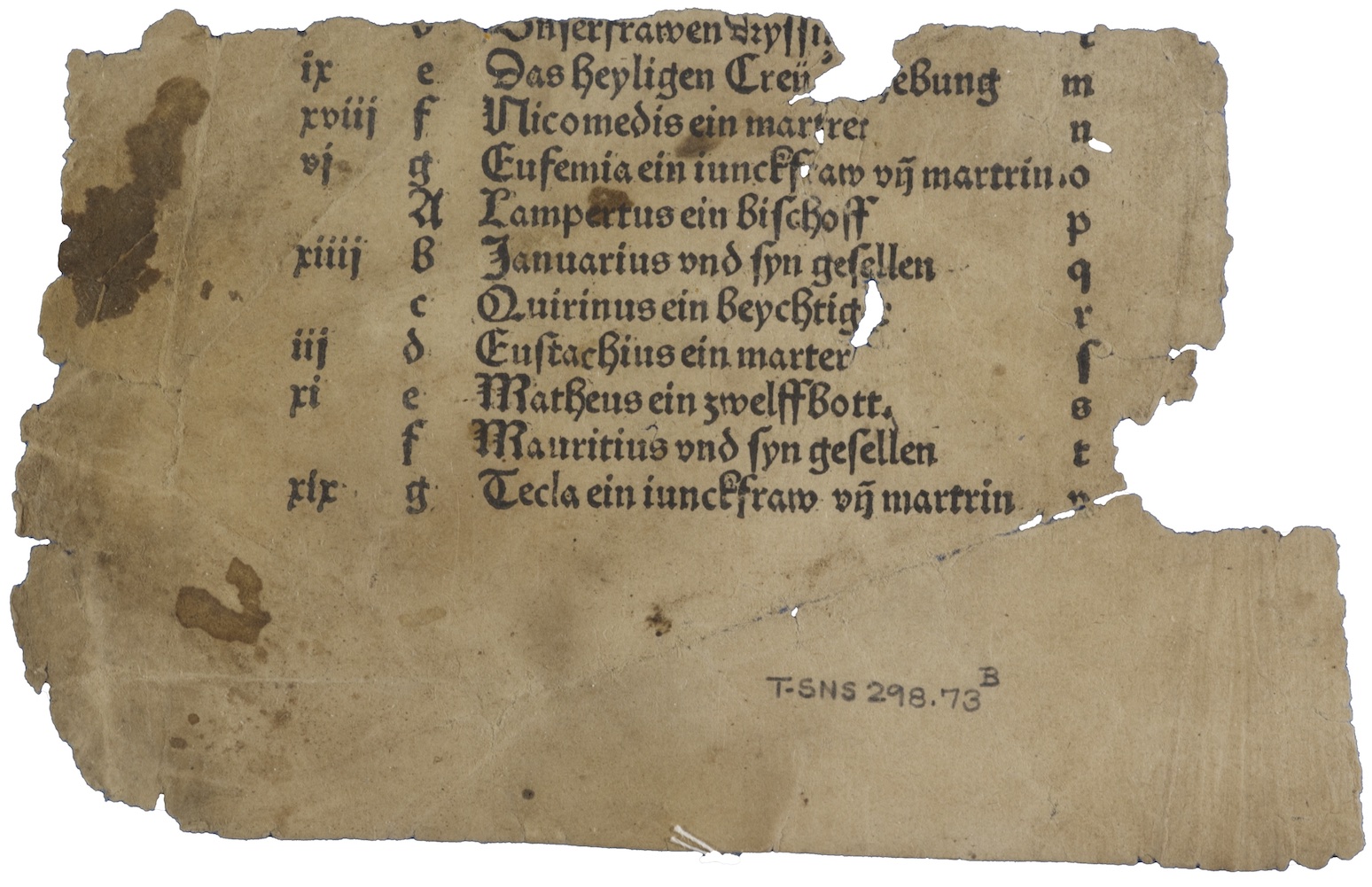Throwback Thursday: How ‘M’ solved calendar mystery

T-S NS 298.73B (verso): part of a sixteenth-century calendar, printed in Strassburg, with a list of Christian saints and martyrs
Thu 9 Jun 2022
Our Throwback Thursday this week is taken from issue 46 of the printed edition of Genizah Fragments, published in October 2003, by Bill Rebiger (then Research Assistant at the Institut für Judaistik, Freie Universität Berlin):
An intriguing phenomenon is the existence of non-Jewish fragments among the material from the Cairo Genizah. One such example at Cambridge University Library bears the classmark T-S NS 298.73. The fragment consists of the lower halves of two paper pages printed in German. The surviving text contains a list of Christian saints and martyrs and mentions such zodiacal signs as Scorpio and Libra, as well as practical advice on eating habits. The fragment was identified through a detailed comparison of the letter “M” as it appears there with catalogues of typefaces used by German book printers in the fifteenth and sixteenth centuries. It emerged that the pages belonged to the Teutsch Kalender published in Strassburg in 1504 by Matthias Hupfuff. This popular and anonymous handbook was produced several times by different printers in South Germany between 1481 and 1522. It consists of a perpetual calendar and medical advice on such topics as bloodletting and bathing, with significant astrological content. The fifty folios are illustrated with fine black-and-white woodcuts. How did this book, or at least these two pages, find their way into the Cairo Genizah? Or, more fundamentally, did they belong to that collection at all? Given the lack of archaeological standards during Solomon Schechter's discovery of the Genizah fragments, there is no certainty about the answer to this latter question. But it is conceivable that a Jew who did business with Christians would have had to become acquainted with their calendar and holy days. It is true that Jews were expelled from Strassburg as early as 1388 but they were allowed to live in the vicinity and to attend the market. The Ashkenazi community in Jerusalem was increased by the arrival of German Jews in the first half of the sixteenth century. The well-known Yiddish letters written in Jerusalem in 1567 by Rachel Zussman to her son Moshe in Cairo supply evidence of at least one Jew in Egypt who understood German. One cannot therefore rule out the possibility that this T-S fragment came to Cambridge from the Cairo Genizah. In any event, it represents a rare copy of the Teutsch Kalender and confirms once again the wealth of the Jewish archive from Old Cairo. A fuller description of the fragment appeared in the EAJS Newsletter, 12 (2002), pages 24–27.
Add new comment